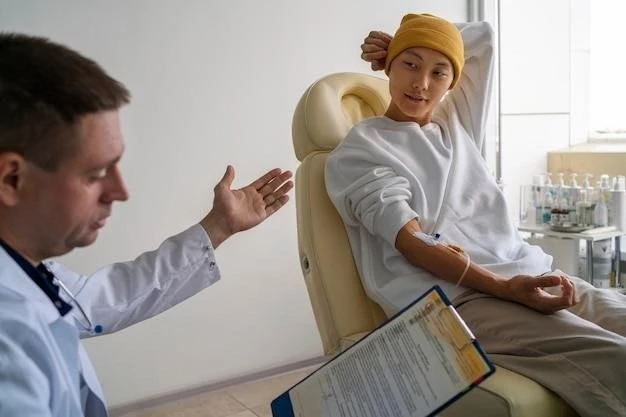Introduction to Troyer Syndrome
Information about Troyer syndrome can be found on the Internet․ Troyer syndrome is a rare genetic disorder affecting the nervous system․
What is Troyer Syndrome?
Troyer Syndrome‚ a rare genetic disorder‚ is characterized by spastic paraparesis‚ dysarthria‚ pseudobulbar palsy‚ distal amyotrophy‚ short stature‚ and speech difficulties‚ causing challenges in walking and muscle control․
Symptoms of Troyer Syndrome
- Progressive spastic paraparesis
- Dysarthria and pseudobulbar palsy
- Distal amyotrophy and short stature
- Speech disorders and difficulty walking
- Drooling and muscle stiffness
Progressive Spastic Paraparesis
Troyer Syndrome is often characterized by progressive spasticity leading to stiffness and paralysis of the lower limbs‚ resulting in difficulties in walking and muscle control․ Understanding this symptom is crucial for diagnosis and management․
Dysarthria and Pseudobulbar Palsy
Dysarthria and pseudobulbar palsy are common symptoms of Troyer Syndrome․ These conditions impact speech clarity and control‚ affecting communication and quality of life․ Seeking specialized care can help manage these challenges effectively․
Distal Amyotrophy and Short Stature
Distal amyotrophy and short stature are key features of Troyer Syndrome․ These symptoms involve muscle wasting in the hands and feet‚ as well as developmental delays in growth․ Understanding these aspects of the condition is crucial for comprehensive patient care․
Speech Disorders and Difficulty Walking
Individuals with Troyer Syndrome commonly experience speech disorders and challenges with walking due to muscle stiffness and weakness in the lower limbs․ Seeking appropriate medical care is essential to address these concerns effectively․
Drooling and Muscle Stiffness
Drooling and muscle stiffness are common features of Troyer Syndrome․ Managing drooling issues and addressing muscle stiffness through therapy can improve the quality of life for individuals with this condition․

Causes of Troyer Syndrome
Troyer Syndrome is caused by a mutation in the SPG20 gene‚ leading to the loss of Spartin proteins essential for nervous system development․
Mutation in the SPG20 Gene
A mutation in the SPG20 gene‚ also known as SPARTIN‚ is responsible for the development of Troyer Syndrome․ This gene mutation affects the production of essential proteins‚ leading to the symptoms observed in individuals with Troyer Syndrome․

Diagnosis of Troyer Syndrome
Specialized genetic testing is required to diagnose Troyer Syndrome accurately․ Understanding the genetic basis is crucial for proper diagnosis and management․
Specialized Genetic Testing
Diagnosing Troyer Syndrome relies on specialized genetic testing to identify mutations in the responsible genes such as SPG20․ Genetic testing plays a vital role in confirming the diagnosis and understanding the genetic basis of the condition․
Treatment Options for Troyer Syndrome
Management of symptoms and physical therapy are essential for individuals with Troyer syndrome to improve muscle control and speech difficulties․
Management of Symptoms
Effective management of symptoms in Troyer Syndrome involves a multi-disciplinary approach focusing on addressing spasticity‚ muscle weakness‚ speech difficulties‚ and mobility issues․ Physical therapy‚ speech therapy‚ and assistive devices can help improve quality of life for individuals with Troyer Syndrome․
Physical Therapy and Speech Therapy
Physical therapy and speech therapy play critical roles in managing Troyer Syndrome․ These therapies help improve mobility‚ muscle strength‚ speech clarity‚ and overall quality of life for individuals affected by this condition․
Prognosis and Outlook for Individuals with Troyer Syndrome
Understanding the prognosis and outlook for individuals with Troyer Syndrome is crucial․ While Troyer Syndrome presents challenges in mobility‚ speech‚ and muscle control‚ ongoing management‚ including physical and speech therapy‚ can help enhance quality of life and overall well-being for those affected by this rare genetic disorder․
Ongoing Research and Genetic Studies on Troyer Syndrome
Discoveries in the SPARTIN gene have advanced our understanding of Troyer Syndrome‚ contributing to ongoing research and genetic studies to further unravel the complexities of this rare genetic disorder․
Recent Discoveries in SPARTIN Gene
A recent significant discovery in the SPARTIN gene has shed light on the genetic underpinnings of Troyer Syndrome․ This finding contributes to ongoing research efforts aimed at understanding and potentially treating this rare genetic disorder more effectively․
Impact of Troyer Syndrome on Families and Caregivers
The diagnosis of Troyer Syndrome can have a profound impact on families and caregivers as they navigate the challenges of managing symptoms‚ providing support‚ and ensuring the well-being of affected individuals․ Understanding the complexities of Troyer Syndrome is essential for families and caregivers to provide the necessary care and support for their loved ones․
Support Resources for Individuals with Troyer Syndrome
Individuals with Troyer Syndrome and their families can benefit from seeking support resources that provide guidance‚ education‚ and emotional support․ Connecting with organizations specializing in rare genetic disorders and neurological conditions can offer valuable resources and a supportive community for individuals affected by Troyer Syndrome․
Conclusion
In conclusion‚ Troyer Syndrome presents challenges in mobility‚ speech‚ and muscle control due to a mutation in the SPG20 gene․ Understanding the genetic basis‚ symptoms‚ and available treatment options is key to managing this rare genetic disorder effectively․ Ongoing research in the SPARTIN gene contributes to advancements in the field‚ offering hope for improved understanding and potential therapies․ Support resources for individuals and families affected by Troyer syndrome play a crucial role in providing guidance‚ education‚ and emotional assistance․ With a multidisciplinary approach‚ including physical and speech therapy‚ individuals with Troyer Syndrome can enhance their quality of life and well-being․
